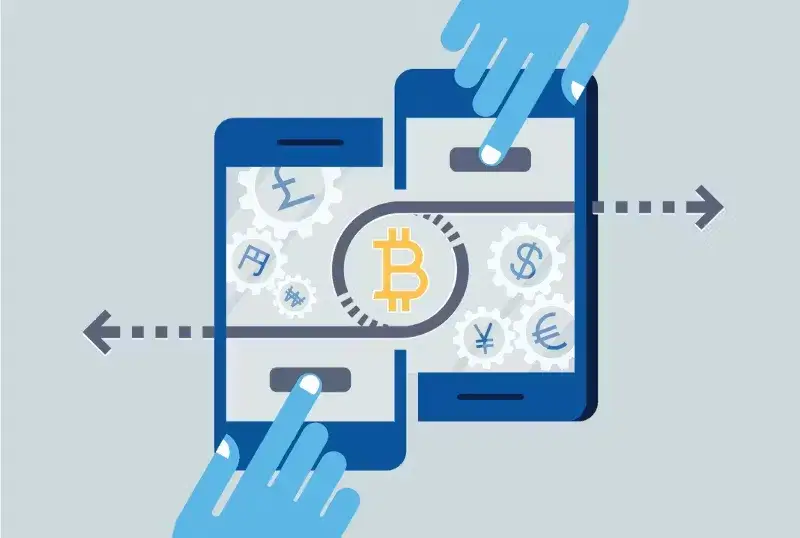The development of the blockchain industry in 2025 has once again increased interest in mining digital assets. With the rising token prices and more complex algorithms, many novice users are eager to find out how to mine as a beginner without unnecessary risks and with reasonable investments. A successful start is possible with basic technical knowledge, understanding of the market situation, and a well-chosen strategy!
Mining Basics: What You Need to Know Before Starting?
To understand the mechanics of the process, it is important to first grasp what cryptocurrency mining is. Essentially, mining involves solving complex mathematical problems, the result of which confirms transactions in the blockchain. A reward is given for each block found. Participants solving these problems use specialized equipment and connect to a network with high computational power.

For those who are just starting their journey in the world of crypto earnings, it is crucial to understand key parameters: hash rate, energy consumption, algorithm type, and the method of storing funds — hot or cold wallet. The amount earned from mining and the time it takes for investments to pay off directly depend on these factors.
Types of Mining Equipment: Choosing Depends on Goals
The first step in figuring out how to mine as a beginner is selecting the right equipment. Various options are available on the market, suitable for specific cryptocurrencies, profitability levels, and energy consumption volumes. Below are the main types of equipment with brief descriptions.
GPU Graphics Cards
Versatile, applicable for mining Ethereum Classic, Ravencoin, Ergo, and other coins. The main advantage is flexibility, the ability to reprofile for other tasks. Disadvantages include rapid obsolescence and high heat generation.
ASIC Miners
Devices tailored to specific algorithms (SHA-256, Scrypt, Ethash). They are characterized by high power, reliability, and quick return on investment. The main drawback is limited application, noise, and difficulty in resale.
Mining Farms
Complex systems consisting of multiple GPUs. They are mostly used by experienced users as they require setup, maintenance, and proper cooling.
Understanding the technical specifications is an important step for beginners on the path to mining without excessive losses.
Mining Pools vs. Solo Mining: What to Choose at the Start?
Novices often wonder whether to join a mining pool or rely solely on their own resources. A pool combines the efforts of many participants, distributing the reward proportionally to each one’s contribution. This model ensures income stability, which is particularly valuable for beginners.
On the contrary, solo mining requires high power — the chances of finding a block on your own are minimal without serious equipment. Therefore, for beginners, opting for a pool is a reasonable decision when considering how to earn from mining consistently.
Advantages and Risks of Participating in Pools
Before joining a collective mining system, it is important to consider the following aspects:
- high probability of regular payouts;
- no need to maintain your own network node;
- automated setup and easy connection;
- pool fees;
- possible restrictions based on regions or equipment;
- need for stable connection and port configuration;
- dependence on platform policies;
- delayed payouts during high load;
- less control over the process;
- potential hacking risks from the pool.
Despite the drawbacks, participating in a pool remains one of the most rational decisions, especially for beginners looking to understand how to earn from mining without major investments.
Impact of Hash Rate and Electricity on Profitability
After choosing equipment and a pool, the next step is to evaluate efficiency. Hash rate is the computation speed determining how many tasks a device can solve in a unit of time. The higher the rate, the greater the chances of receiving a reward. However, as power increases, so does energy consumption, leading to costs.
The cost of electricity in the region often determines whether earning cryptocurrency with the chosen configuration is feasible at all. Sometimes it is more profitable to rent capacities through cloud mining or move to a region with favorable tariffs rather than trying to recoup expenses in unfavorable conditions.
How to Earn from Mining as a Beginner: Brief Guide to Getting Started
When considering practical steps, basic actions to start token mining include:
- registering on a pool and obtaining an identifier;
- configuring equipment for the chosen currency;
- downloading and configuring mining software;
- providing a wallet address;
- regularly monitoring temperature, load, and profitability;
- calculating expected profit considering fees, wear and tear, and expenses.
Thus, earning from mining is not just about starting a device but a comprehensive task involving financial and technical planning.
Profitability in 2025: How Much Can You Earn from Mining?
Considering the network’s increasing complexity, market competitiveness, and token price fluctuations, assessing profitability requires regular reassessments. Even with a high hash rate and good equipment, mining can turn unprofitable without monitoring the conditions.
Key factors include network difficulty and block discovery frequency, coin price and volatility, block reward size, transaction fees, electricity costs, and rental space expenses.
Therefore, when contemplating how to earn from mining as a beginner, the focus shifts from “just starting” to “how to systematically and consistently stay profitable.”
Choosing a Cryptocurrency for Mining
There are numerous options for mining in 2025 — from classic Bitcoin and Litecoin to more niche solutions. Algorithms, network size, pool availability, and profitability are taken into account. When choosing, consider:
- whether the device supports the required algorithm;
- availability of a reliable and stable pool;
- currency’s current value and stability;
- no planned switch to POS;
- available software and wallets for storage.
Beginners should focus on coins with open-source code, high decentralization, and a proven track record — ensuring stability and minimizing risks.

Conclusion
The question of how to earn from mining as a beginner requires thoughtful preparation rather than impulsive decisions. Successful cryptocurrency mining is possible with a careful assessment of equipment, pool selection, electricity cost calculation, and regular profitability monitoring.
Even with a small budget, it is possible to build an effective strategy by paying attention to details, using proven solutions, and avoiding common mistakes. In 2025, mining remains a viable earning tool — provided a rational approach and continuous learning!







 The 2024 halving ended with the reward being reduced to 3.125 BTC, but at the current stage it no longer has a key influence. Market dynamics have shifted towards institutional accumulation, ETF inflows and the general trend towards asset digitalization. The Bitcoin price forecast until the end of 2025 is based on aggregate demand factors, and not on the emission limitation. The medium-term trend is strengthening if the growth of interest from pension funds and public companies continues.
The 2024 halving ended with the reward being reduced to 3.125 BTC, but at the current stage it no longer has a key influence. Market dynamics have shifted towards institutional accumulation, ETF inflows and the general trend towards asset digitalization. The Bitcoin price forecast until the end of 2025 is based on aggregate demand factors, and not on the emission limitation. The medium-term trend is strengthening if the growth of interest from pension funds and public companies continues. Bitcoin price forecasting is based on real processes, including halving, institutional interest, technological development, and global regulation. The analysis shows that the token is demonstrating exponential rather than cyclical growth. The long-term forecast takes into account not only financial parameters but also the transformation in the architecture of the global economy. Network stability, supply shortages, integration into institutional instruments, and growing confidence continue to form a powerful upward trend.
Bitcoin price forecasting is based on real processes, including halving, institutional interest, technological development, and global regulation. The analysis shows that the token is demonstrating exponential rather than cyclical growth. The long-term forecast takes into account not only financial parameters but also the transformation in the architecture of the global economy. Network stability, supply shortages, integration into institutional instruments, and growing confidence continue to form a powerful upward trend.
 Making money with cryptocurrency in 2024 through staking is suitable for those who want a stable income without constantly trading. Unlike cryptocurrency mining, the process does not require expensive equipment or large energy costs. Investors receive a reward for supporting the blockchain network.
Making money with cryptocurrency in 2024 through staking is suitable for those who want a stable income without constantly trading. Unlike cryptocurrency mining, the process does not require expensive equipment or large energy costs. Investors receive a reward for supporting the blockchain network. Ways to make money with cryptocurrency in 2024 offer many methods for earning active and passive income. Trading, staking, lending, and holding allow you to choose the right strategy depending on your goals and experience. Using these tools wisely will help you achieve your financial goals and adapt to the changing market.
Ways to make money with cryptocurrency in 2024 offer many methods for earning active and passive income. Trading, staking, lending, and holding allow you to choose the right strategy depending on your goals and experience. Using these tools wisely will help you achieve your financial goals and adapt to the changing market.